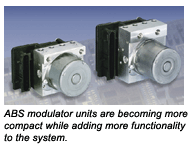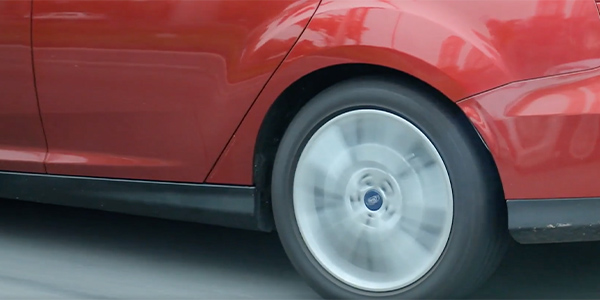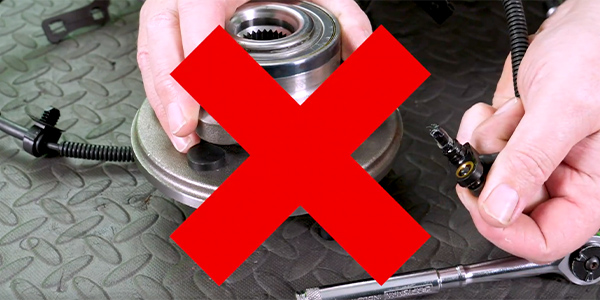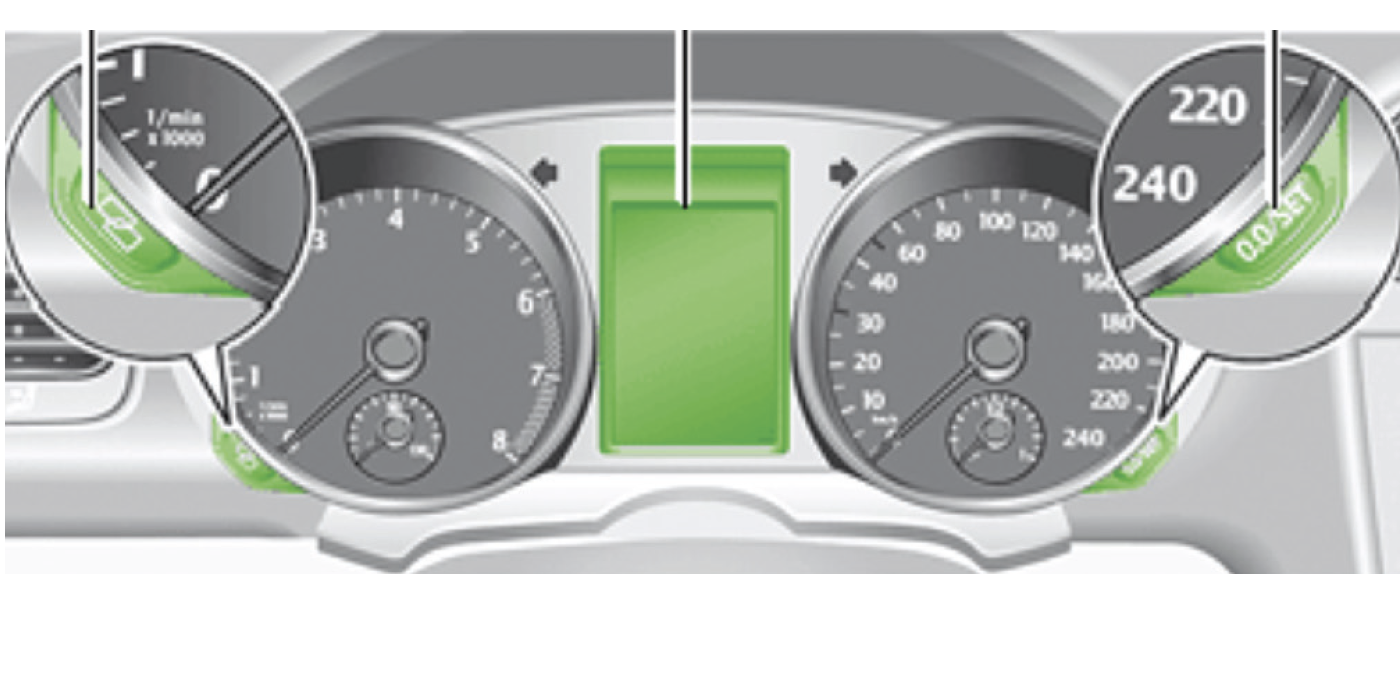Profitability Hinges On Solid Preventive
Maintenance Program
An unusual event happened last week: a customer actually wanted a glowing warning light on his anti-lock braking system diagnosed! A preliminary interview revealed that: a) the ABS warning light was continuously illuminated, b) the brakes pulled to the right, and, c) the brake pedal pulsated when pressure was applied to the pedal. Noting the pulling and pulsating complaints, I cautioned the customer that the service brakes had to be operating correctly before the anti-lock portion could be accurately diagnosed. In other words, the repair would likely entail a lot more work than repairing a faulty electrical circuit to “make the light go out.”
Since I had a full schedule ahead for the week, I referred him to a friend’s brake and alignment shop for a complete brake inspection. But the customer’s call for ABS service reminded me that, despite many earlier projections, I really don’t get that many calls for ABS service.
My friends at the brake and alignment shop seem to share my experiences. Of course, I work in a rural market in which the ABS light may be either ignored or conveniently concealed by an inch or so of black electrical tape. On the other hand, it’s possible that ABS is so reliable that most shops aren’t experiencing a large influx of ABS repair work.
Nevertheless, I think that most shops take anti-lock brake system maintenance very seriously. We recommend flushing the system every two years and we scrupulously inspect the service brakes for operative malfunctions such as grabbing, pulling or pedal pulsation. We also take care not to contaminate tone rings or wheel speed sensors with grease or metal chips from on-the-car machining. We also make sure that wheel sensor leads are carefully remounted in their original positions so as not to risk damage from road debris. While it’s true that a high-volume general repair or brake specialty shop will see its share of hard ABS failures, it’s also true that the typical shop with less than six bays may see few, if any, hard failures in the pump or valve system. Most failures, when they occur, will be in the wheel speed sensors, which exist in a relatively hazardous operating environment.
 With those thoughts in mind, ABS has also tended to define the differences between the dealership and independent service markets. As opposed to the independent, dealerships usually sort out all of the teething troubles prevalent in any new technology like ABS. These troubles include software problems that generate false trouble codes, wiring faults, and hydraulic faults like sticking switches and valves. To diagnose these troubles, the dealer tech needs specialized equipment like a breakout box or a set of caliper pressure gauges. He also needs a detailed knowledge of each system and its potential pattern failure points to efficiently make the appropriate diagnosis.
With those thoughts in mind, ABS has also tended to define the differences between the dealership and independent service markets. As opposed to the independent, dealerships usually sort out all of the teething troubles prevalent in any new technology like ABS. These troubles include software problems that generate false trouble codes, wiring faults, and hydraulic faults like sticking switches and valves. To diagnose these troubles, the dealer tech needs specialized equipment like a breakout box or a set of caliper pressure gauges. He also needs a detailed knowledge of each system and its potential pattern failure points to efficiently make the appropriate diagnosis.
On the other hand, when independent shops encounter a baffling ABS failure, there’s plenty of help available through brake part manufacturers, technical hotlines and Internet sources like the international Automotive Technicians’ Network (iATN). Since there are literally hundreds of ABS configurations on the market, it’s especially important to follow diagnostic troubleshooting charts or listed procedures to avoid expensive diagnostic mistakes and repetitive testing.
Of course, not all of this information is well prepared or organized in a task-oriented fashion. In one case, I worked my way through three pages of test procedures only to discover that, at the bottom of page three, the brake light fuse also supplied current to the ABS computer! On the other hand, I violated my own rule of always checking the brake lights first before getting into an extended ABS diagnosis!
Obviously, most ABS complaints can be quickly diagnosed by following a simple pre-diagnostic inspection, which may include such simple tasks as checking brake fluid level, specified tire size, equal tire circumference, condition of wheel or axle speed sensors, brake light operation, and performance of the service and park brakes.
As your experience with ABS grows, you’ll learn to look for simple failures first. Too often, when the ABS warning light illuminates, we assume that an expensive electronic failure has taken place when, in fact, an off-size spare tire is creating a false signal to the ABS computer.
On a larger scale, the anti-lock brake service business is indicative of how technology can affect the independent service market. We can’t, for instance, assume that our market will parallel the dealership market. We must remember that the dealer tech is usually trying to solve a factory defect complaint. In most cases, the OEM complaint is caused by a single component failure. After all, the parts in a new car are, as you may suspect, new. So, unless it’s an obscure failure the tech is dealing with, only one part will be replaced to remedy the complaint.
In the aftermarket, on the other hand, an ABS complaint may be linked to multiple failures caused by wear, abuse and neglect. The aftermarket tech may be typically confronted by a combination of worn brake pads, warped rotors, a sticking park brake lever and a broken wheel speed sensor.
In most cases, ABS systems can be serviced with ordinary shop equipment. The rare failure that demands specialized equipment can more profitably be referred to a shop that’s specially equipped for that specific service.
All in all, any shop owner must consider how much hard-failure ABS work he may encounter that will demand specialized diagnostic and repair equipment. Single- or dual-line nameplate specialty shops excepted, chances are that the majority of shops will rarely encounter an equipment-specific ABS repair. In most cases, offering a good ABS preventive maintenance program will be all any shop will need to remain profitable in ABS services. Time and experience usually does away with the fear and apprehension created by a sophisticated technology like anti-lock brakes.
Talking to Drivers About ABS
By Glenn Beanard
Some customers might be surprised to find out that anti-lock brakes are not intended to shorten stopping distance. In fact, in many cases they lengthen the stopping distance in comparison to conventional braking systems. The purpose of anti-lock brakes, is to maintain steering control during a panic stop. The idea is not so much to stop quicker, but rather be able to steer around the problem.
So what makes an anti-lock brake system? The anti-lock brake system (also called anti-skid by some manufactures), is an electronic system that has control over the mechanical parts of the brake system, and can override the driver’s demand for braking pressure. With an anti-lock brake system, an electronic control module “watches” each wheel turn, by use of wheel speed sensors. Should it see one wheel stop spinning, it will then release the pressure for the brakes to that wheel, allowing that wheel to start turning again. Now that the wheel can turn again, traction with the road’s surface can be regained and steering control can be restored. Software built into the electronic control module determines the difference between a wheel that has locked during braking, versus a wheel that has stopped at a traffic light with the wheels not moving.
As with any electronic system, failures can arise. When they do, the ECU has the ability to diagnose its own system to a certain point. It will turn on the yellow anti-lock brake light to alert you that there is problem. It will then store a numeric fault code telling the technician where to start looking for the problem. As with any fault code, the code does not mean to replace any parts, it just means to start looking for the problem at a certain place. Normally, for your safety, if the ABS ECU “decides” that it can’t do its job correctly, it won’t do it at all. If the yellow ABS warning light is on all the time, then typically the ABS system will not function. You will be left with conventional brakes. Meaning, if you are in a “panic stop,” the wheels can lock sending the vehicle into a skid.
Depending on the brand of the ABS system in use, the pedal may take on different feelings during an ABS panic stop. Some vehicles will let the brake pedal go incredibly soft, almost allowing it to contact the floor. Others will actually push the pedal back up at the driver. Either feeling can be very startling. It can feel as though you have lost braking ability, right when you need it the most… and to a certain point… you have. So slow down out there a bit. Don’t go thinking that since your vehicle has ABS, you are somehow able to drive faster and stop quicker. That is simply not the case.
Field Report: Honda Master Cylinder
By Bob Dowie
Oftentimes, you’ll get a complaint that “the brakes went down to the floor and now they’re OK.” Like any other intermittent problem, we have to ask the right questions to get the information we need to diagnose the problem. In this case, our experience tells us that this problem could be caused by excessive heat, possibly the result of friction material that is dragging. Or the master cylinder could be the problem.
We’ve seen some problems with Honda master cylinders resulting in complaints of occasional brake pedal fade. When faced with this complaint, ask the customer if the problem occurs after a long high-speed drive. If it does, you can be pretty sure that sticking friction material is the problem. As you remove the wheels, you should have no problem seeing signs of extreme heat. If the problem is more evident in around-the-town driving, suspect the master cylinder. I find that you can duplicate a master cylinder symptom by applying light pressure on the brake pedal while descending a hill.












